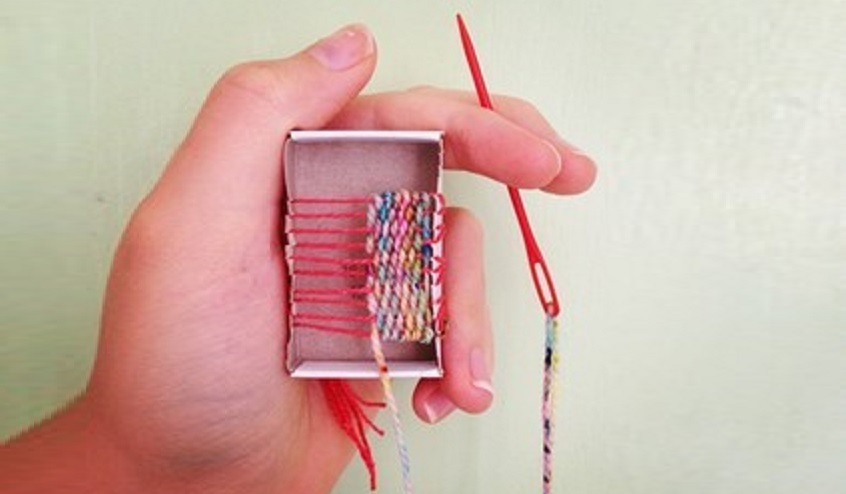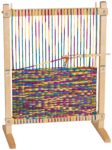If you are like me, you add hobbies to your list like you’ve got an unlimited bank account and a store full of goodies. The only problem is, hobbies get bigger, or more expensive, or more time-consuming. Unless you find smaller, cheaper hobbies, but those are usually the ones we start with, intending to work up to something bigger.
I’ve always wanted to try weaving. I have a friend who has a small loom and sells her weaving projects, which is a great way to keep your craft area free of finished projects you can’t decorate with because you’ve got too little space as it is without adding an extra three to fifteen hangings to the walls.
For myself, however, I wanted to really scale down and learn something I could do on the go, in the car, or whenever I had a few minutes while waiting at the doctor’s office or when taking lunch. Then the matchbox loom came along and I fell in love.
What is cuter than a tiny matchbox? It can do so many things besides hold matches. It can house tiny toys, you can put them together to make a miniature dollhouse, or in this case, you can make a loom which you can use to create mini wall hangings for a dollhouse — or you can make your own jewelry (mini hangings make great statement pieces as earrings and necklaces).
Of course if you don’t want to go that small, you can always try the small loom tutorial by Fall for DIY, who used a small piece of wood, nails, a hammer, cord, embroidery thread, a tapestry needle, and a crochet hook to create a small handheld loom that, while it might not be exactly “on-the-go” ready, it can be packed in a bag and taken on overnight or weekend trips if you want to get some weaving done (weaving is relaxing too, once you get the hang of it, so if you’re going on a business trip or a family reunion and you begin to feel a little stressed or anxious, pull out the loom and work for a few minutes).
There are many ways to make the loom to your liking, including different shapes (rectangle, square, or diamond, for instance), different materials (from matchbox to pizza box), and weaving materials such as leather, ribbon, fabric, thread, or yarn. It’s up to you what size and shape you want your loom to be, and when weaving, just be sure that whatever materials you are using are appropriate for the size of your loom. You want your weaving to be tight enough that it won’t come loose after being taken off the loom.
Does this sound like something you’d enjoy doing? You can make your own loom using the tutorial from Fall for DIY, or you can take a peek at how a loom works to gain some understanding before you build over at From This Cloth. You can also look at Marisa Ramirez’s photo to see how her matchbox loom came together. Whichever way you choose to go, weaving is a great skill to learn, and has multiple uses. Happy weaving!






